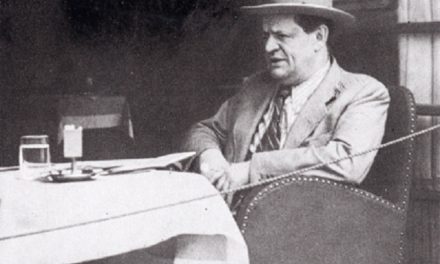"A nation that does not know its past does not understand its present, and cannot create its future!"
Europe needs Hungary... which has never let itself be defeated.
Kingdom of Hungary or royal Hungary?
It is not my job to decide which name is correct, but rather I can only indicate the difference between the two country names. Historians, textbooks, lecturers, and specialized literature discuss the half-lobe-shaped country of Hungary, which is divided into three parts, the northern and eastern parts, and the western part of Transdanubia. The Kingdom of Hungary means legal continuity, as this has been the name of our country in the Carpathian Basin since Saint Stephen. However, whoever uses this country name also recognizes the authority of Vienna and the Habsburgs . It is logical to the extent that the Turkish Subjugation could not be the heir of the more than half-millennium-old Hungary. The Principality of Transylvania - although it played the lion's share of the land of Transylvania in the preservation of Hungarian culture and Hungarian national defense - its leaders and population could not bear the name of the Kingdom of Hungary due to the predominantly Protestant creed and their forced friendship with the Turks. Although the first ruler of the principality ( János II ) János Szapolyai still a Hungarian king, Zsigmond János .
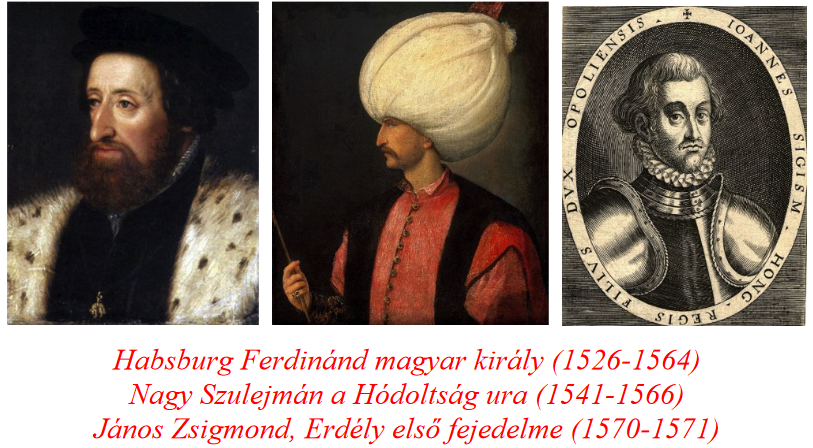
The legal continuity is questionable due to two fundamental reasons, among others.
On the one hand, because of the size of the area. After all, as already mentioned, it only included the western part of Transdanubia, the Highlands and the eastern ends. On the other hand, a foreign king was sitting on the throne who ruled the country from Vienna. Most of today's literature uses the name Kingdom of Hungary. Those who prefer the name royal Hungary only recognize legal continuity with restrictions. This is understandable because of the mutilation of the territory, foreign rule, and Vienna's centralization efforts. It should be noted that the independence-seeking policy of the Hungarian orders was anti-Vienna in many respects, which led to a series of independence wars in the following centuries. (I myself am emotional, and following the continuity and logic of history, I prefer the concept of royal Hungary. This means that Vienna has caused immeasurable damage to Hungary during the past half-millennium.)
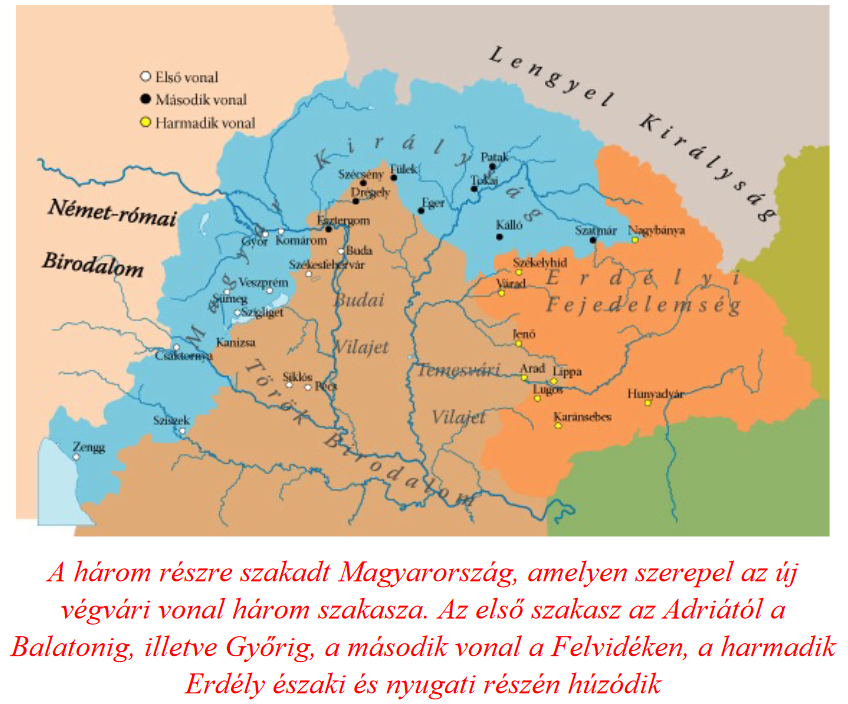
Heroes of the castle wars
The decades after Mohács resulted in a tragic period of Hungarian history. The Mohács disaster, the genocidal, all-destroying dark years of the Turkish conquest (see chapter 35) revived the Hungarian resistance. With its own interests in mind, Vienna supported the renovation of the system of end castles and the construction of new ones. The former knights' castles were partially rebuilt. So that they are suitable for neutralizing the increasing firepower of the cannons, and for taking fire from the enemy besieging the walls on ladders. Most of the castle types with turreted bastions were designed by Italian master builders, which is why they are also called Italian bastions.
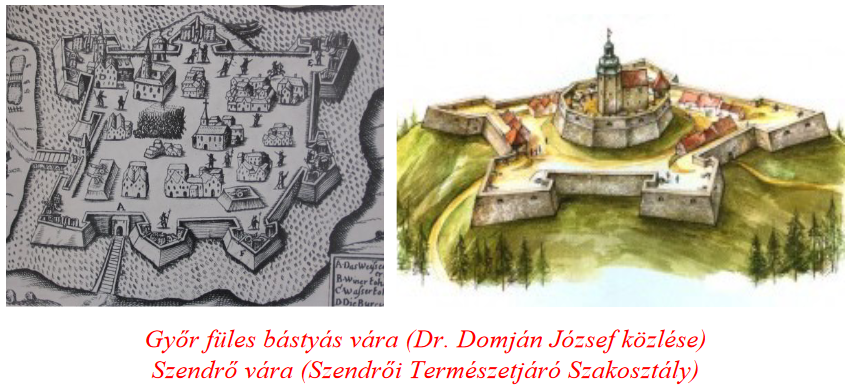
Sülejmán launched his wars against Vienna. The first siege of the imperial city was unsuccessful. János Szapolyai who was allied with the Turks at the time , and his royal adviser Lodovico Gritti (see section 37) defended the Hungarian capital against the imperial troops besieging Buda. The one-year siege was unsuccessful, the Austrian troops withdrew from Buda at the end of 1530. The third great attack of the Turks was launched in the spring of 1532 against Hungary and Kőszeg, but the final goal this time was the capture of Vienna. At the same time, the siege of Esztergom took place. In the end, both Turkish campaigns failed. The Ottoman troops achieved success only at Komárom, during the crossing of the Danube. The most memorable siege of the 1532 campaign took place near Kőszeg. The defense army of only 700 people Miklós Jurisics . During the ferocious attacks, half of the defenders fell, the castle was shot to ruins, but the Turks could not capture Kőszeg. In addition, Sülejmán ran out of time, as he neither had the strength nor the siege time left to successfully besiege Vienna before the onset of the rainy autumn season. They made a strange deal, as a result of which the Turks were allowed to display the horse-tailed flag, but they were not allowed to march into the castle. The first, protracted castle war was followed by a series of Turkish attacks. The 16-17. 20th century Hungarian history resulted in the heroic struggle of the nation's heroes, the protection of the country and the desire to reunite the three parts of the country. Caught between two great powers, the Hungarian nation lived through a century of crisis.
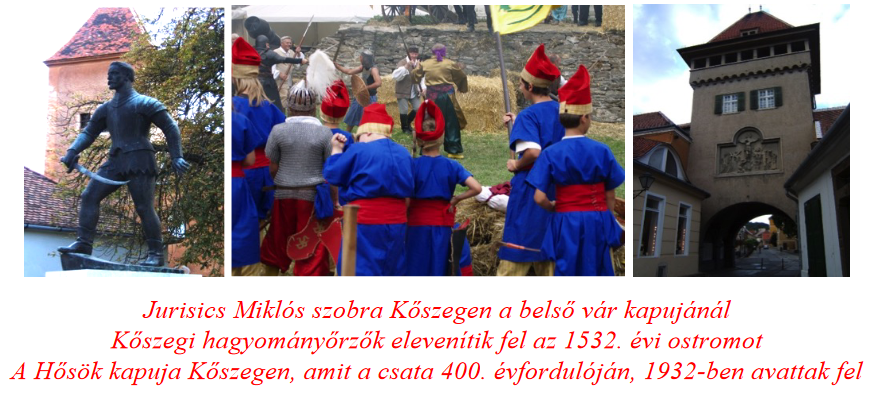
Capture of Buda
In addition to the city ruins and the clashes on the battlefield, the Turks chose an economical way of occupying Buda.
(See part 37!) The janissaries infiltrated the castle of Buda, preparing for a ruse, pretending to be friends. The sultan camped in the area of today's Óbuda while receiving the Hungarian lords. The delegation János Szapolyai , Izabella Jagelló , with the newborn Zsigmond János Szapolyai . The Turkish soldiers, who entered the castle without a siege, disarmed the unsuspecting guard at a given signal and, exactly fifteen years after the Battle of Mohács - on August 29, 1541 - they hoisted the horse-tailed flag signifying victory on the castle steps. Gül Baba , a warrior Muslim monk who came with the Turkish army, located in Buda, is a memorial of grace .

After the capture of Buda, the Turks attacked our country with renewed force. In 1543, Pécs, Siklós, Esztergom, Fehérvár and Tata fell to the Ottomans.

The coordinated castle wars
The army of the Ottoman Empire, stationed in the middle of the country - from Lake Balaton to the western border of Transylvania - methodically killed the Hungarians.
villages and towns turned into wasteland and barren land. Sülejmán Nagy was not satisfied with this. He wanted to extend the borders of his empire to the west and north - to the territory of the Kingdom of Hungary. The concerted campaign of 1552 became an eloquent testimony to this will of the Sultan. The first significant victim of the campaign was Timisoara, which was outdated but played an important strategic role. The fortress István Losonczy with about 2,000 men against a twenty-fold superior force. The captain and the mercenaries vowed to protect Timisoara even at the cost of their lives, which was only a promise after a short time due to the dried-up moat in the great heat. The mercenaries abandoned Losonczy, and the imperial relief army did not arrive. The inhabitants of the city forced the castle captain to give up Timisoara in exchange for a free retreat. They should have known that the Turks could not be trusted. The Hungarians who retreated unarmed were slaughtered by the Turks. Ahmed Pasha, who led the Ottoman war triumphantly, continued his journey north. The importance of the region is shown by the fact that, in addition to the Buda Vilajet, the Timisoara Vilajet became one of Porta's prominent centers.
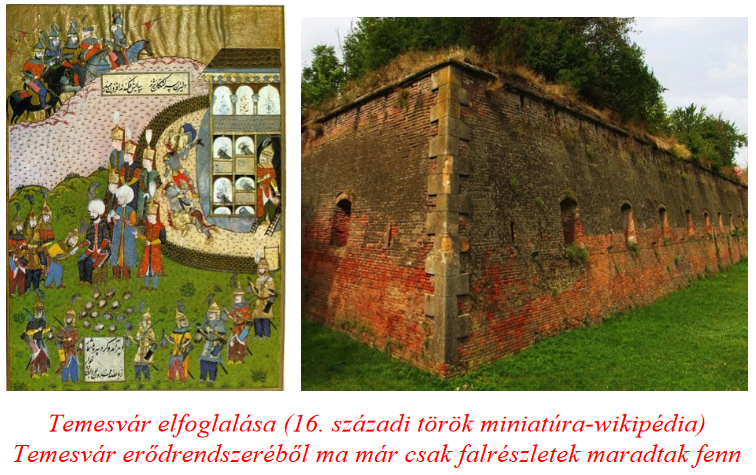
At the same time, in the summer of 1552, Ali, Pasha of Buda, occupied the castles of Veszprém, Drégely, Ság, Gyarmat, Szécsény and Hollókő. The siege of Drégely was one of the well-known events of the campaign of 1552, recalling the glorious days of Hungarian national defense. The small stone castle in Nógrád György Szondi with only 150 men. Ali Pasha already destroyed the walls with his cannons, but the defenders did not surrender. The Pasha offered a free retreat. The castle defenders rather fell to the ground - they were not mercenaries - Szondi was among them, but they did not surrender the castle.

Ahmed Pasha , who occupied Timișoara, also took the castles of Karánsebes, Lippa and Arad. The original plan of the two pashas was to meet at Szolnok Castle. However, the mercenaries defending the fortress on the Tisza River escaped from the palanquin before the siege. Unable to withstand the cannon fire and the overwhelming force, most of the small number of defenders fell. Szolnok also fell into Turkish hands. The commanders of the two victorious armies designated a new location where the final victory was no longer in doubt for them. They wanted to crown their success by capturing Eger.
Heroes of Eger
The united Turkish army of about 70,000 people, swimming in the euphoria of victory, marched at the gates of Felvidék to occupy the castle, which Buda Pasha Ali only called a sheepfold. István Dobó at the head of 2,000 soldiers , who did not receive support from the court. Therefore, he began to renovate the castle at his own expense. The fortification of the walls had not even been completed when Ali Pasha's artillery began to besiege the castle. However, the Turks did not count on István Dobó's brilliantly organized defensive tactics. Furthermore, they did not count on the ingenuity of his deputy, the handyman Gergely Bornemissza . The son of the Pécs master blacksmith designed monstrous fire tools that did a lot of damage to the ranks of the attackers and their equipment.
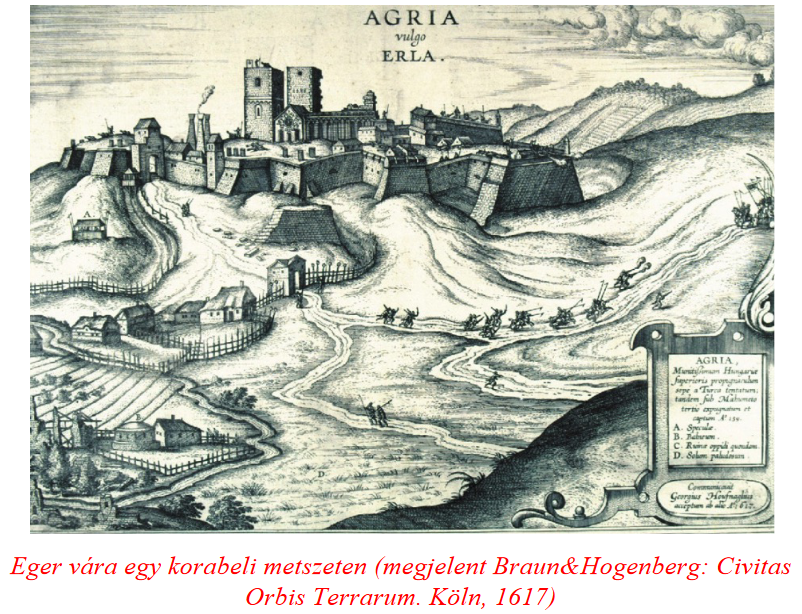
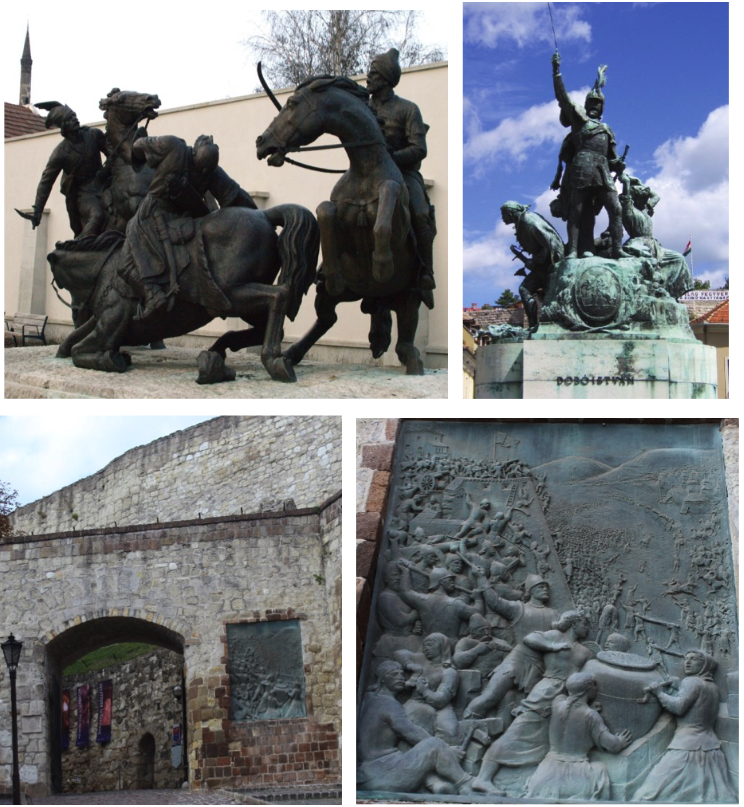

And the Turks did not expect that the women who contributed to the victory would also appear on the steps of the castle. After a five-week siege, the Turkish army suffered an ugly defeat. The defenders of Eger are still role models for young and old. After all, with their determination, heroism, excellent military leadership, and patriotic spirit, they proved that overwhelming force can be defeated. (However, let's not forget what happened so many times over the centuries. For example, in the case of the Nándorfehérvár triumph that preceded the siege of Eger almost a hundred years /in 1456/, Hungary was left alone again. This will happen many times, just as it is happening today! )
Hungarian-Turkish Friendship Memorial Park
How do the boots get on the table? So that in 1994, at the border of Szigetvár, the town's municipality leased the area to the Turkish state for 1 HUF for 99 years. This can be explained by the desire to develop tourism, the policy of the two states that nurtured good friendship in recent decades, and the mutual mercy activity that takes care of each other's memorials in a dignified manner. (For example, keeping the Rákóczi and Kossuth houses in Turkey in order.)
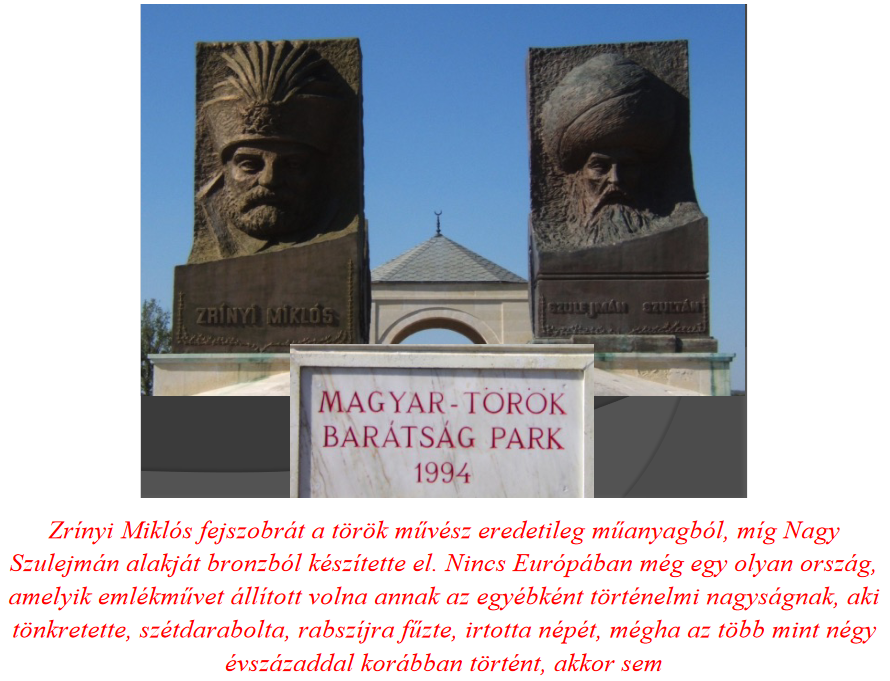
It should be known that Sultan Süleyman was one of the biggest, if not the biggest, pest of our thousand and one hundred years of history. The capture of Nándorfehérvár in 1521, the Mohács tragedy in 1526, the continuous siege of Kőszeg and the outlying castles, and then the capture of Buda in 1541 are linked to his name. The splitting of the country into three parts is associated with his name, he razed dozens of cities, castles, and hundreds of villages to the ground. The depopulation of entire counties is also attributed to Sülejmán. For almost five decades of his life, the most prestigious ruler of the Ottoman Empire considered the occupation and destruction of Hungary his honored task. Just as his career began in Hungary, he also ended his life on Hungarian soil. It was during the siege of Szigetvár in 1566. It is characteristic of the sultan's cruelty that after every victorious battle he erected pyramids from the severed heads of thousands of Hungarian warriors, and in the middle the head of the castle captain was impaled on a high pole.
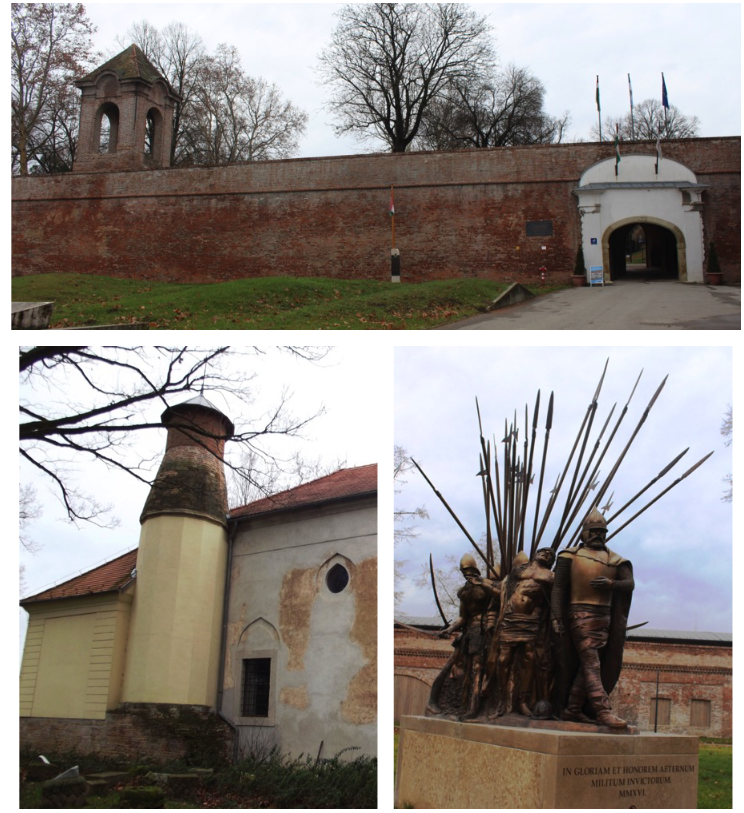

Sülejmán, who deeply despised Hungarians and Christians, took great pleasure in killing men, women, and children.
His methods included instilling fear and the constant harassment of "gyaur dogs".
Tens of thousands were killed, hundreds of thousands were taken into captivity. Some of them were made to work as excellent craftsmen, others were sold, and their more sophisticated prisoners were returned to their families in exchange for a ransom. Vienna left the towns, villages, and castles at the ends to themselves. The people living here were either able to reorganize or met the fate outlined.
Historians are still debating whether the Turkish destruction had anything to do with the tragedy that led to the Trianon.
(I myself firmly state, even if from a distance of four centuries, that it was one of the main reasons for Turkish rule in Trianon.)
Life was safer in the interior areas of the kingdom than along the Végvár line discussed above, where constant fighting determined the daily life of those living there. However, it should be known that the military of the castles protecting the eastern borders of the empire were mostly Hungarians. In almost all cases, imperial - royal - help arrived late or never arrived.

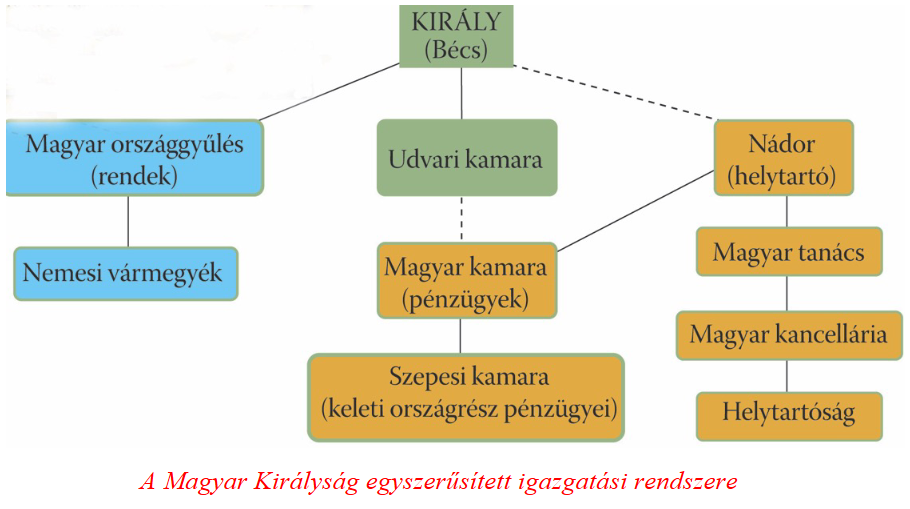
Ferdinand as their official king
, in line with their well-understood interests The country of the Hungarians was governed from Vienna, but the appointed capital was Bratislava. (After Esztergom, Fehérvár, Visegrád and Buda, the easy-to-control city on the Danube near Vienna became the country's capital for four centuries.) The Hungarian nobility held its parliaments in Bratislava under the leadership of the Palatine. Vienna and Bratislava depended on each other to ward off the Turkish threat. Despite their common interests, they were at constant war with each other. The stake was the protection and increase of power and family assets. The Hungarian nobility achieved that they still did not pay taxes. However, it should be known that the Austrian and Czech nobles paid taxes to Vienna. The emperor was only able to achieve with the Hungarian nobles that the defense system was strengthened from the taxes collected from the serfs. Every Hungarian noble had to field two cavalrymen for every 100 serfs. The parliamentary nobility, however, carefully ensured that their personal income did not decrease.
The Hungarian serfs of the kingdom were taxed both ways. On the one hand, they paid tithes to the state and on the other to the landlord. The serfs' burdens were increased by the fact that they were assigned to the construction works of the end castles and other community works. Despite their extra weight, their situation was safer than in the other two parts of the country. After all, the Turks were the masters in the Subjugation, and the Principality of Transylvania was the "gateway" for the Turkish armies.
Cultural life in the Kingdom of Hungary
The cultural life of the 16th century - as contradictory as it may seem - was due to the Turkish conquests and the explosive spread of the Reformation. These posed a strong challenge to the spiritual life of the Roman Catholic Church and the Habsburg Empire built on it, including the Kingdom of Hungary. Luther's doctrines first took root in the northern German provinces and among the Transylvanian Saxons. By the end of the 16th century, a quarter of the country's population was Lutheran, half Calvinist, and only the remaining quarter remained Catholic. In the eastern part of the country, Roman Catholic and Reformed preachers engaged in sharp religious debates with each other in public squares, churches, and manor houses. Calvinist preachers achieved the greatest success, because they spoke intelligibly, in Hungarian, and in the language of the people. They gained great popularity especially among the poor. (The foundations were already laid by the Hussite doctrines that spread in the 15th century, especially in the highlands.)

The first Bible translation, the entire New Testament, was carried out by János Sylvester Tamás Nádasdy . The country judge never broke with the Roman Catholic Church, but at the same time he was receptive - along with many of his peers - Erasmus of Rotterdam , who was a forerunner of the Reformation. Thanks to Nádasdy, the printing house set up in Sárvár - which was the first such workshop to spread the humanist spirit in the Hungarian language - became one of the strong fortresses of Hungarian culture. Let's mention some important personalities who did a lot for the spread of Hungarian culture.
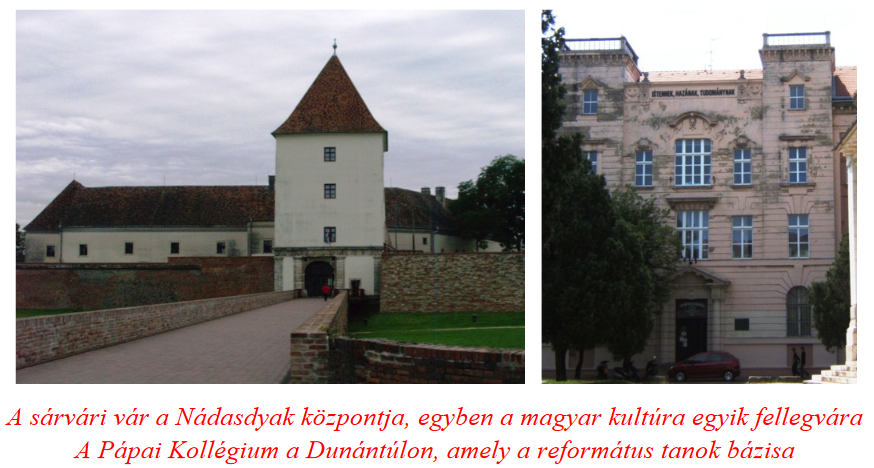
In the territories dominated by the Turks Péter Méliusz Juhász (Debrecen), István Kis Szegedi (Csanád, Temesvár, Cegléd), István Gálszécsi (Gyula), András Batizi (Békés, Szatmár), István Székely (Szikszó, Gönc). The reformers of Transylvania were Gáspár Heltai (Cluj), István Gyulai (Vízakna), Ferenc Dávid (founder of the Unitarian Church).
The reformers of royal Hungary were István Kopácsi (Sárospatak, Mátra region), Mihály Siklósi (Dráva and Bodrog region), Gáspár Károlyi (Gönc). Judge Mátyás Dévai (Kassa, Debrecen, Buda), Mihály Sztárai (Baranya, Tolna).
Most of the nobility and some of the commoners remained Roman Catholic, while the population of the eastern part of the country converted en masse to one of the Protestant religions. The already mentioned proselytes, Bible translators, teachers, and school founders contributed with great vigor and knowledge to the care and development of the country and Hungarian culture. The centers of culture and the dissemination of knowledge became Sárospatak, Debrecen, Gyulafehérvár and Pápa on Transdanubia, where the most significant Reformed colleges and printing houses were established, where famous teachers preached the word.
Mention should be made of Comenius , who was known throughout Europe as an educator. It is true that the famous Moravian teacher was recorded as a theologian. A Norwegian researcher discovered in Comenius' will that his birth name was Szeges, i.e. of Hungarian origin. His father, Márton Szeges , was settled in a Moravian village, hence his Moravian (erroneously Czech) origin. Zsuzsanna Lorántffy invited Comenius to teach at Patak, where he stayed between 1650-1654.
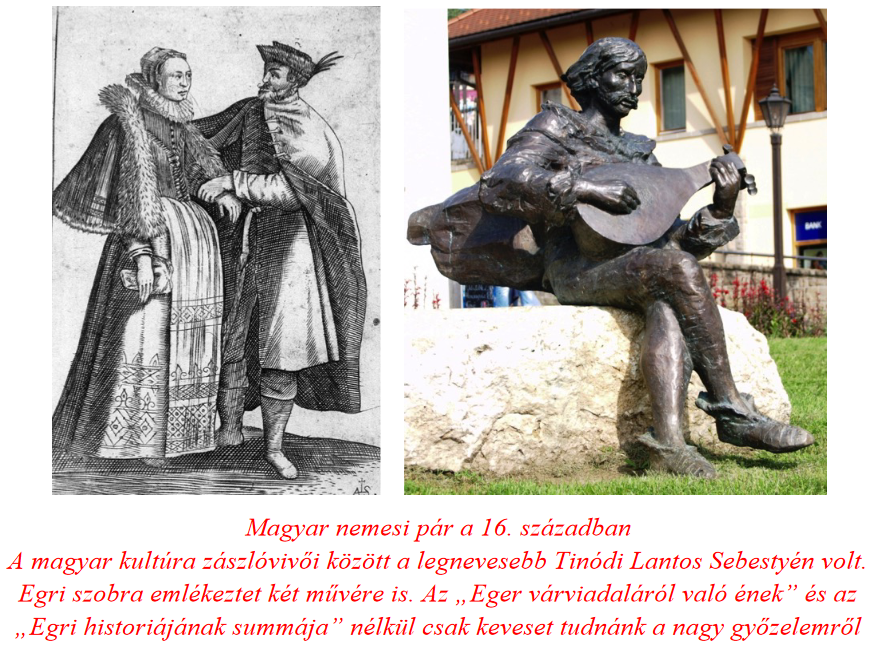
The works of singers, poets, writers, and master builders reveal a lot about everyday life and the level of contemporary culture. It is enough to mention a slice of the life and work of Sebestyén Tinódi Lantos Pest, Eger, Szigetvár, Dombóvár, Nyírbátor and Sárvár, among others, have in common that each city has a statue of the wandering singer. This suggests that he visited these places and even lived in each place for a longer or shorter time. It is noticeable that the listed cities are far from each other. The itinerant chronicler, singer, and lute player traveled most of the country and, to the great fortune of posterity, processed the Hungarian historical events between 1541 and 1552. Bálint Balassi , the "pioneer of Hungarian poetry" who lived in the second half of the 16th century, continued his chronicle work .

Bálint Balassi (Balassa), born in Zólyom in 1554, is an outstanding figure of the Hungarian Renaissance. He is a famous Turkish beater, a famous swordsman, the protagonist of many scandals, and a skirt hunter respected by families with daughters. Unlike Tinódi, Balassi was not a wandering chronicler, but entered the pages of Hungarian history and literature as the "first great figure of Hungarian Renaissance poetry". The Balassa family had kinship and alliance relations with many noble and aristocratic families of Hungary at the time. (The town of Balassagyarmat still proudly bears the memory of the settlement's eponymous family.) Bálint Balassi was related to István Dobó , whose wife was Balassi's maternal aunt.
Those were hard times!
Unfortunately, it is not so impossible for today's people to imagine what it meant when the country was divided into three parts, and the parts of the country lived their daily lives under three different rulers. It is also not far from us today to understand and experience what was caused when the warriors of Islam attacked Christian-Christian Hungary and Europe full of hatred. Furthermore, the war, the horrors of which avoided Europe for many decades - with the exception of the Balkan war - caused human lives, economic difficulties, and diseases.
This is how the 16-17th passed. century in Hungary, but our people's will to live helped our country through the difficulties. Culture developed, the Turks disappeared, and we had capable leaders who defended their homeland and were able to give their lives if needed. The country is united, and our ancestors wanted nothing more than to finally live in peace. But the enemies of Hungary did not let this happen. István Bocskai, the Zrínyis and the Rákóczias the Széchenyis and Lajos Kossuth , premature death or the bitterness of exile awaited our elders.
The country is 16-17. his 19th-century image is most faithfully reproduced by the engravings of his contemporaries.
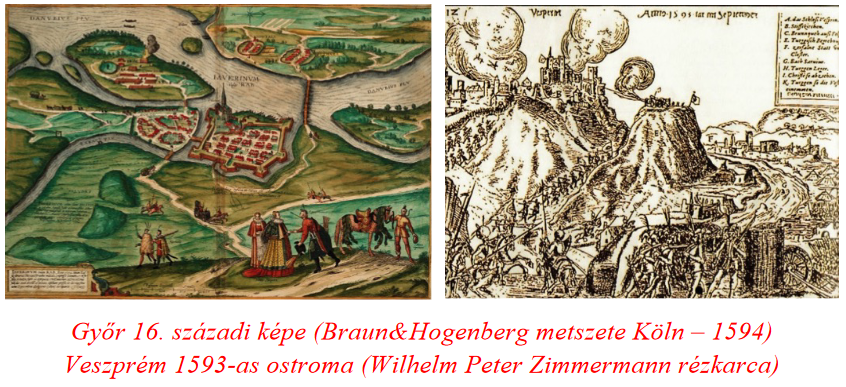

We often quote that the Principality of Transylvania saved Hungarian culture and education for posterity. Let us add that this national saving work was directed and supported by the reformed princes. In the territory of the Kingdom of Hungary, in addition to Protestant values, the priests, nobility, peasantry, and industrial strata of the Roman Catholic Church also played a decisive role in Hungarian culture, economic life, and military defense. We will get an answer to what happened in the Subjugation in the next part.
Author: Ferenc Bánhegyi
(Header image: Screen shot from the movie "The Stars of Eger" )
The parts that have been published so far can be read again here: 1., 2., 3., 4., 5., 6., 7., 8., 9., 10., 11., 12., 13., 14., 15., 16., 17., 18., 19., 20., 21., 22., 23., 24,, 25., 26., 27., 28., 29/1., 29/2., 30., 31., 32., 33., 34., 35., 36., 37., 38., 39., 40.



